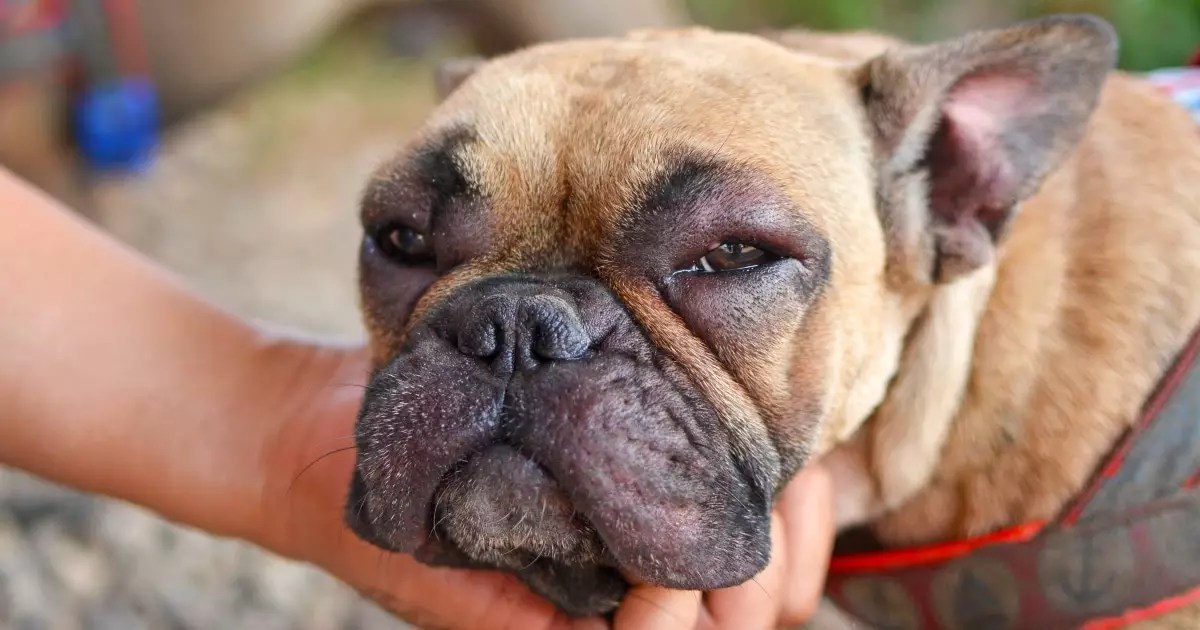As a devoted dog owner, few things are as distressing as witnessing your furry friend struggle with discomfort. When dogs exhibit signs of eye irritation—scratching their eyes, squinting, or experiencing redness and discharge—it can be an indication of itchy eyes. Just as in humans, this irritation can stem from a multitude of factors, making it crucial for pet parents to stay informed about possible causes and remedies. This article delves into various triggers of itchy eyes in dogs, effective at-home treatments, and guidance on when veterinary intervention is essential.
Understanding the Causes of Eye Irritation
One of the most prevalent reasons behind itchy dog eyes is allergies. Dogs, like humans, can develop sensitivities to environmental elements such as pollen, dust mites, and molds. Seasonal allergies often become more pronounced in spring and fall, particularly for dogs that spend considerable time outdoors. Symptoms of allergic reactions frequently encompass red, watery eyes along with additional signs like frequent sneezing and skin irritations. In cases where allergens are identifiable, reducing exposure can make a significant difference. Moreover, veterinarians may prescribe antihistamines to alleviate these symptoms, providing much-needed relief.
Another condition that can lead to discomfort around the eyes is dry eye, or keratoconjunctivitis sicca. This occurs when a dog’s tear glands are unable to produce enough tears to maintain moisture in the eyes, resulting in irritation and inflammation. Often caused by immune system dysfunction or trauma, dry eye can lead to severe complications, including corneal ulcers. Treatment typically involves medicated eye drops designed to stimulate tear production and maintain eye health.
While allergens and dry eye are common culprits, potential dangers also lurk in the form of foreign bodies. Small particles like dirt, grass seeds, or debris can inadvertently find their way into a dog’s eye, causing immediate discomfort. Pet owners should remain vigilant during outdoor activities and ensure that any foreign object is gently flushed out with a sterile saline rinse. If discomfort persists, it’s advisable to seek veterinary help to prevent further issues, such as corneal abrasions.
The Impact of Infections and Structural Conditions
Infections are a significant cause of itchy eyes and should not be overlooked. Conjunctivitis, often referred to as pink eye, can manifest in different forms—bacterial, viral, or fungal. Symptoms typically include redness, excessive tearing, and thick, colored discharge. Early detection and treatment by a veterinarian are pivotal, as an untreated infection may worsen and lead to the spread of illness or lasting damage to the eyes.
Further complicating matters are structural conditions like entropion and ectropion, which can lead to chronic issues for specific dog breeds. Entropion involves the inward rolling of the eyelids, causing eyelashes to rub against the eye surface. Ectropion, conversely, refers to eyelids that flip outward, exposing sensitive eye tissue. Both conditions can lead to significant discomfort and require veterinary intervention for correction—often through surgical methods.
Home Remedies to Alleviate Mild Symptoms
Before rushing to the vet, many dog owners seek methods to alleviate minor symptoms at home. Simple yet effective remedies can provide temporary relief. Regularly flushing the eyes with a saline rinse can help clear irritants and reduce inflammation. A cold compress applied to the area can soothe swelling and help your dog feel more comfortable. Keeping the area around the eyes clean by gently wiping away any discharge with a moist cotton ball can also serve as a preventive measure against further irritation.
Additionally, preventing your dog from pawing at their eyes is crucial. This can be achieved by using an Elizabethan collar—often deemed a cone—which can protect the sensitive area and allow for healing when irritation exists.
When to Seek Veterinary Attention
Despite the availability of home remedies, there are clear indicators that warrant seeking professional veterinary care. If symptoms continue for more than 24 to 48 hours without improvement, or if you notice yellow or green discharge, it is critical to consult with your veterinarian. Other warning signs include persistent squinting, cloudy or swollen eyes, or visible signs of trauma. Early evaluation is essential to prevent complications, including infections and potential vision loss.
Your veterinarian may conduct a series of tests—including fluorescein staining, tear production tests, and eye pressure assessments—to diagnose the underlying causes of the symptoms. Remember, the earlier you identify and address the issue, the better the outcome for your beloved pet.
In essence, keeping a close eye on your dog’s health can prevent minor irritations from escalating into significant problems. Whether it stems from allergies, infections, or structural issues, understanding the signs and knowing when to seek professional help can empower you as a responsible pet owner, ensuring that your dog’s eyes remain healthy and bright.

